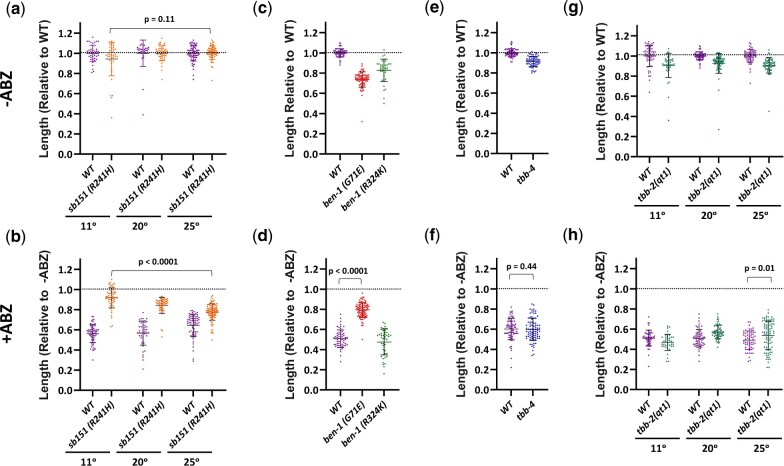Fig. 5.
Phenotypes of selected mutations in ben-1 and other tubulin genes. Animals were measured after 8 days at 11°C, 3 days at 20°C, and 2 days at 25°C, during which time controls grew to L4/Adulthood. Unless otherwise indicated, experiments were performed at 20°C. Upper panels (a, c, e, and g) were grown in the absence of ABZ and were normalized to the wild-type run in parallel. Lower panels (b, d, f, and h) are the corresponding experiments grown on 7.5 μM ABZ and are normalized to the strain grown in parallel in the absence of drug. a, b) Although the corresponding S. cerevisiae is cold-sensitive for growth, sb151 was not. sb151 did cause a slight reduction in ben-1 function at 11°C as indicated by better growth on ABZ at the lower temperature. c, d) The ben-1 G71E mutation (gk332957) from the Million Mutant Project showed partial resistance to ABZ but R324K (gk358233) did not, indicating that the latter mutation does not compromise function. e, f) Loss of tbb-4, which includes the sensitive F200 residue did not alter drug sensitivity. g, h) The temperature-sensitive mutation tbb-2(qt1) showed slight resistance at its restrictive temperature of 25°C. Two-tailed Mann–Whitney Rank-Sum test were used to calculate P-values. Mean and standard deviations are indicated. Supplementary Fig. 8 contains raw data in microns.

